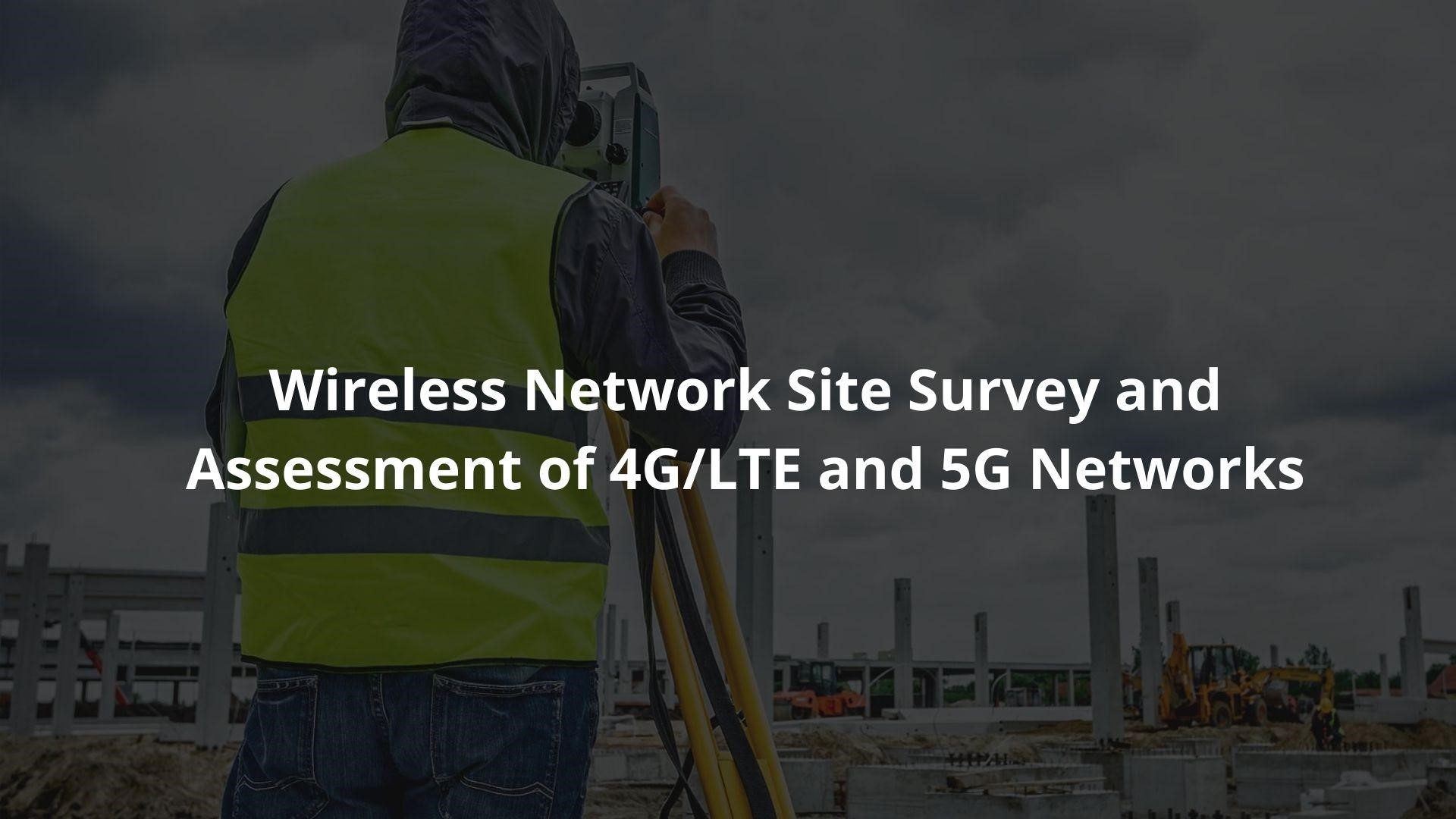What is a Wireless Network Site Survey?
A wireless site survey is a physical survey of the premises where the wireless network will be installed. A site survey report helps visualize the wireless network coverage. To do a wireless site survey, first, you need to locate the radio equipment and peripherals in their approximate positions and select some areas in other parts of the facility that remain uncovered by a reception.
Wireless Network Site Survey
Then, walk around with your spectrum analyzer (a handheld instrument with both RF and non-RF functionality designed for capturing data associated with radio waves) and run a quick sweep or install an additional antenna on top of existing microwave dishes and measure signal strength as well as any possible interferences encountered. You can use common communication tools available on all smartphones. Such as Wifi Analyzer which is quite useful in identifying weak spots on your network infrastructure. And can indeed help organize ad hoc site surveys easily.
What is the Assessment of 4G/LTE & 5G Networks?
We’re all for technological disruption, but we are certainly not going to be among the first to use it. There are numerous reasons why early adopters tend to get a bad reputation, and we plan on staying far away from that – especially when it comes down to using 5G. After all, you can’t stumble around like a fool if you’re the one leading the charge.
For years, the hype surrounding 5G felt never-ending, but it is now available in most major cities. It’s also being rolled out across the globe, in and around town and country areas. And will soon be as widely used as the 4-G standard that came before it. However, it’s still in its premature stage of expansion. And many of us are still relying on good old long-term evolution (LTE) technology. The LTE is a standard for wireless communications first installed in 2009.
Also Read: Pink HeadPhones
LTE (Long Term Evolution):
LTE (or Long-Term-Evolution) is a mobile phone protocol, released in 2009 as part of the 4G movement. In many ways, LTE set the bar for what we’d call “4G” nowadays by offering much faster speeds than anything that had been previously labeled as 4G. But as you might guess, some early infrastructure systems weren’t up to this brand new standard. Since they were designed differently pre-4G. Vital telecommunications companies spent years ensuring their hardware could meet the standards required for a true 4G connection. And now – over a decade later – most people across the globe enjoy the benefits of LTE.
5G:
5G is a successor of the popular fourth-generation, called 4G LTE. The 5G and 4G LTE are cellular network standards for wireless communication. The Wireless Network Site Survey, they specify measures to be taken in order to dispatch data at much higher rates than before (usually measured in megabits per second and gigabits per second). Over shorter distances than previous standards allowed, sometimes as low as 1ms.
Although 5G can also use frequency bands lower than 6 Gigahertz but above low-band frequencies. These certainly don’t support the highest possible speeds. However, these lower speeds will still outclass anything that 4GLTE offers, and deploying ‘sub-6’ connectivity might even expand 5G coverage. Given the fact walls and surfaces often serve as blockers to mmWave frequencies.
How helpful are Wireless Site Survey and Assessment of 4G/LTE and 5G Networks:
Trying to manage your WiFi on a long train ride can be infuriating. Access points are either far too few or many and you have to constantly keep reestablishing connections. And what is even worse is that it sometimes happens with the WiFi at home! Having poor internet coverage doesn’t help with productivity. But if you have reliable WiFi in the garage or any other areas around where your customers or employees will hang out. Then you are setting yourself up for better future success with less time wasted having to fix connection issues all the time.
As an entrepreneur, the bigger an audience you can draw in, the more effective your business will become. When your brand is operating at peak capacity, you’ll attract potential investors to assist in furthering your expansion across markets and demographics. The same can be said for a WiFi network after all! There’s no better way to optimize your space online than by assessing ways in which you can maximize it with viable connectivity. This means acquiring reliable systems that provide first-rate speeds, while also offering clients easier access to install their own WiFi hardware if need be.
Finally, the findings at Ericsson reveal the next generation of network technologies. It will be a large part of worldwide telecommunications for a long time to come. Although 5G is likely to become the prevalent standard in the telecom industry. It’s not yet accurate to say that 4G LTE has already been replaced. Probably by 2026, around 95% of the global population will have access to 4G LTE; and 65% percent will be covered by 5G. Until then, you might want to keep your current package just in case.

